Available 24/7
Available 24/7


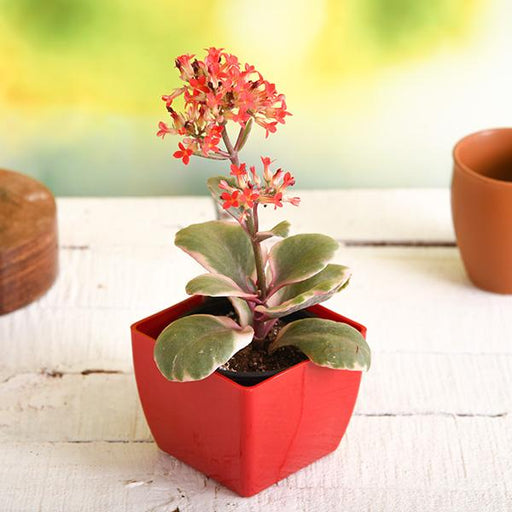 Save 13%
Save %
Save 13%
Save %
DescriptionKalanchoe is a flowering succulent with adorable variegate leaves and pink edges. It is a rare variety and can be a great addition to yo...
View full details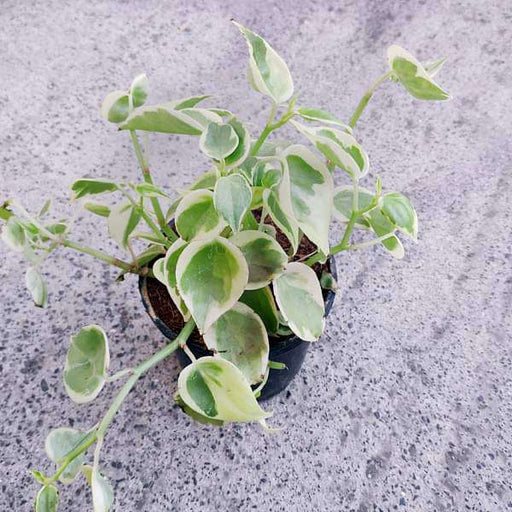 Save 15%
Save %
Save 15%
Save %
DescriptionCupid Peperomia, Peperomia scandens variegata - Succulent PlantPlant Specifications Plant Height 6 inch (15 cm) Plant Spread 4 inch (...
View full details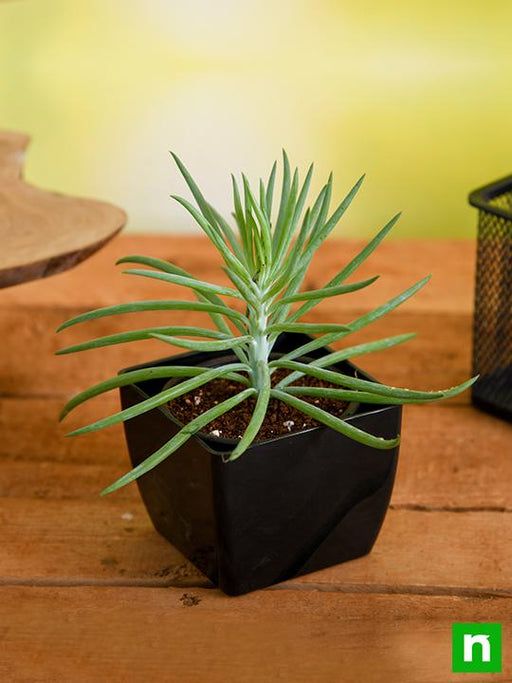
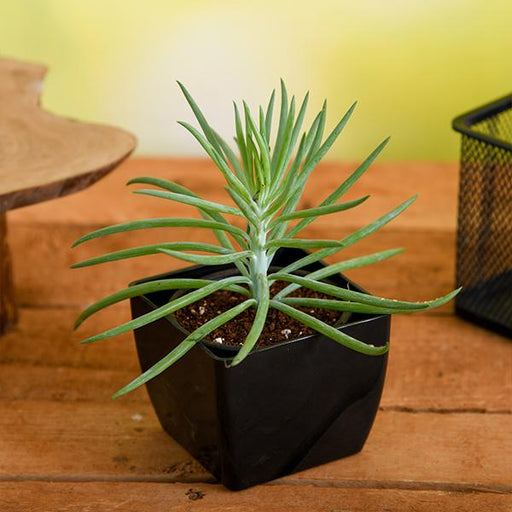 Save 15%
Save %
Save 15%
Save %
DescriptionThis evergreen succulent bush adds a lot of texture to your outdoor succulent garden. The leaves are light green, pointing up on the bra...
View full details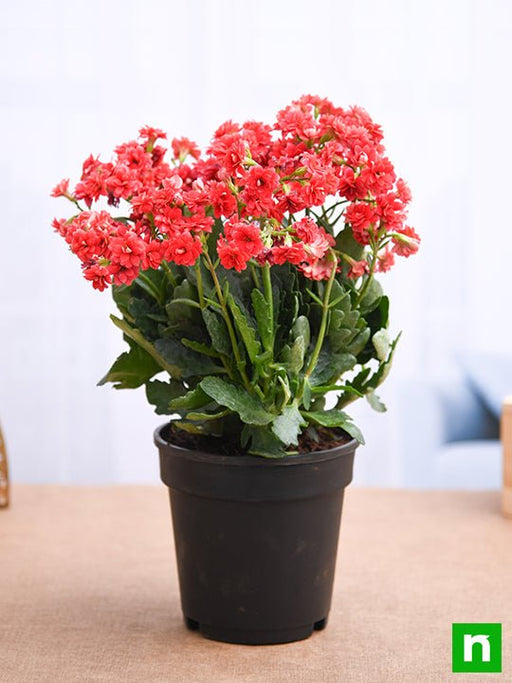
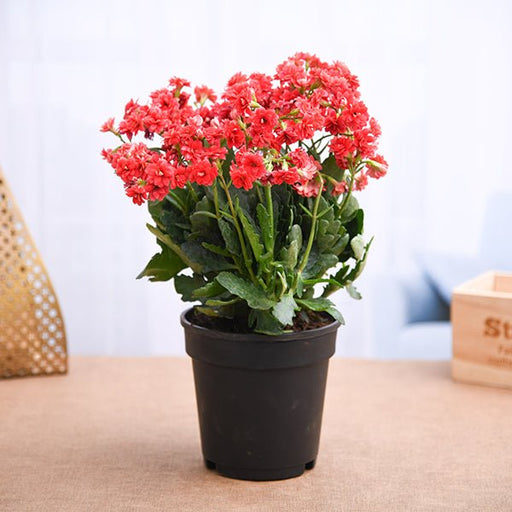 Save 16%
Save %
Save 16%
Save %
DescriptionKalanchoe plants are thick leaved succulents that are often seen in florist shops or garden centres. Most end up as potted plants but ar...
View full details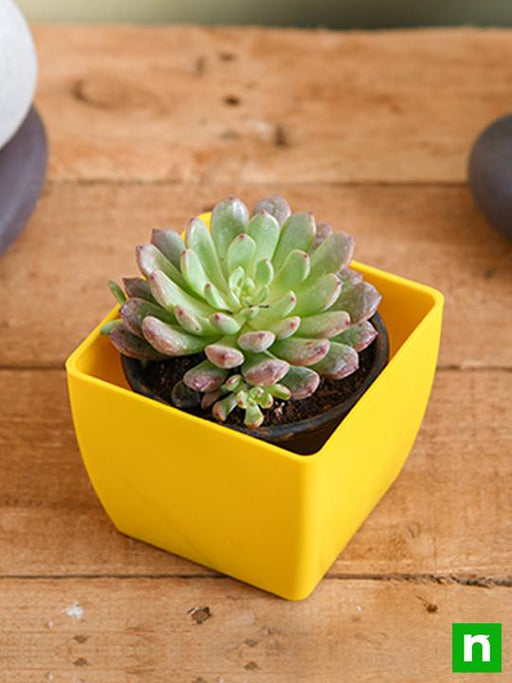
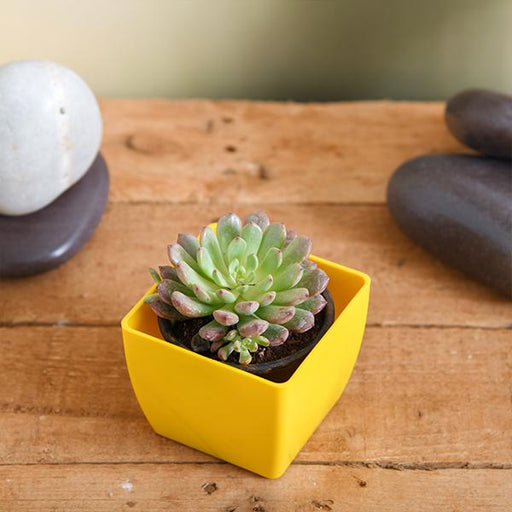 Save 10%
Save %
Save 10%
Save %
DescriptionSedeveria are succulent plants that are hybrid crosses between Sedum and Echeveria. Constituents: Sedeveria Pink - Succulent Plant- 1 3...
View full details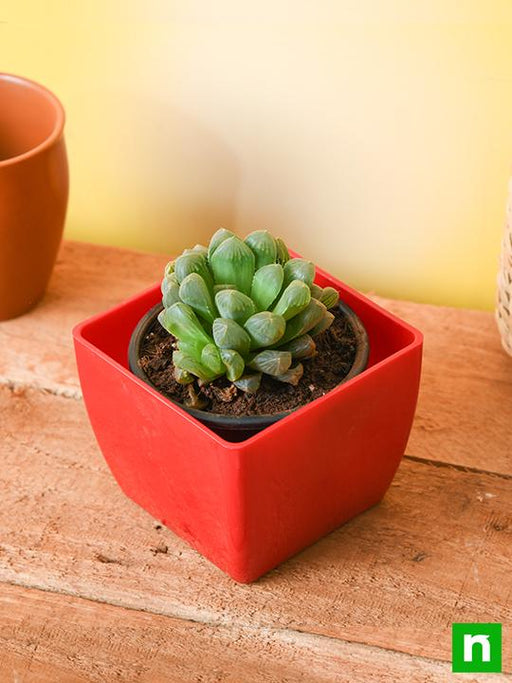
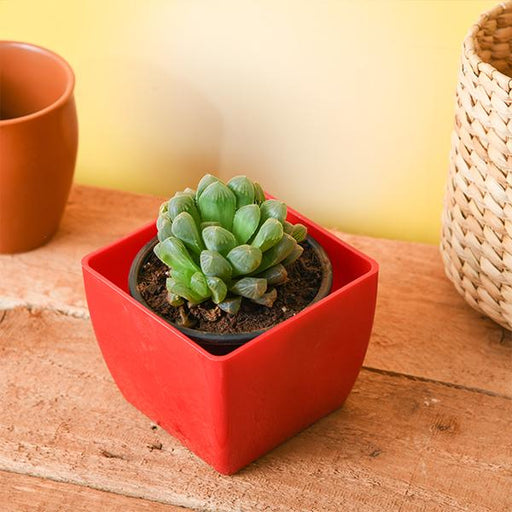 Save 16%
Save %
Save 16%
Save %
DescriptionPlants grow in clumps of small rosettes of tiny, fleshy, soft, and green leaves.Constituents: Haworthia cooperi - Succulent Plant- 1 3 i...
View full details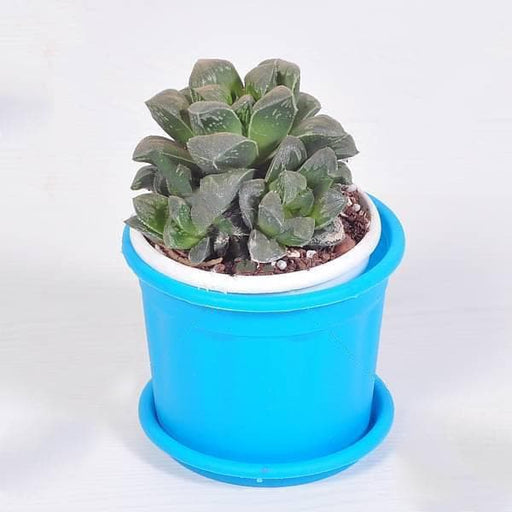 Save 20%
Save %
Save 20%
Save %
DescriptionIts flat leaf ends have more rounded tips and a grey color. Sr Item name 1 Haworthia pygmaea - Succulent Plant 2 3 inch (8 cm) Grow...
View full details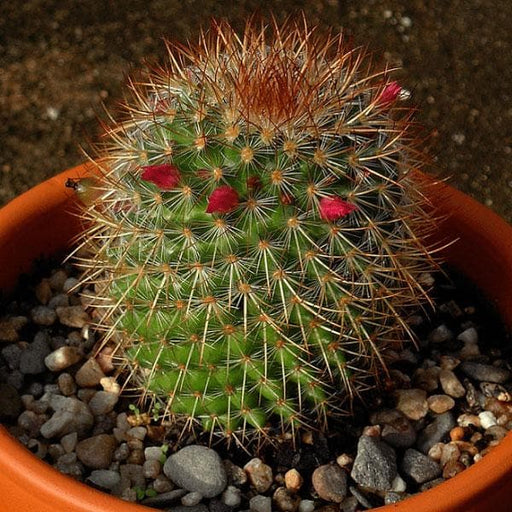 Save 10%
Save %
Save 10%
Save %
DescriptionPincushion cactus is a large group of small, free-flowering cacti that are easy to care for. Sr Item name 1 Pincushion Cactus - Cactu...
View full details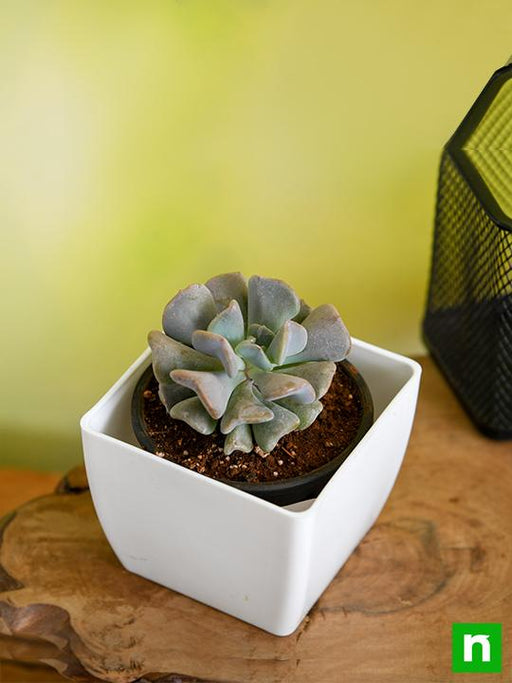
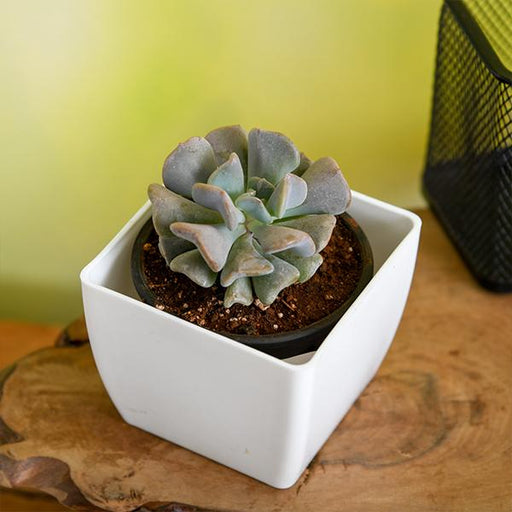 Save 15%
Save %
Save 15%
Save %
DescriptionEcheveria is a large genus of flowering plants in the Crassulaceae family, native to semi-desert areas of Central America, Mexico and no...
View full details
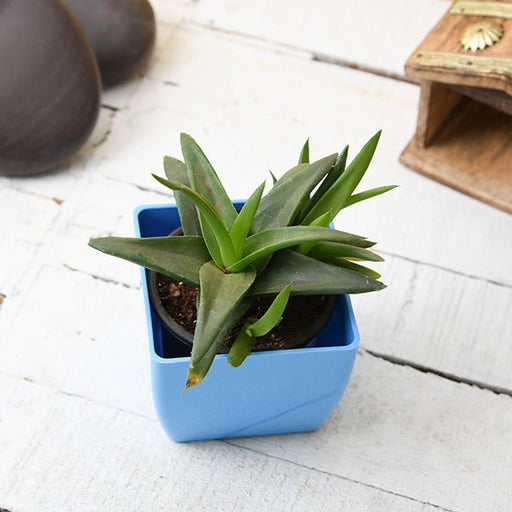 Save 11%
Save %
Save 11%
Save %
DescriptionAlworthia Black Gem evergreen, perennial succulent. Alworthia Black Gem evergreen, perennial succulent generates many tight offsets, cre...
View full details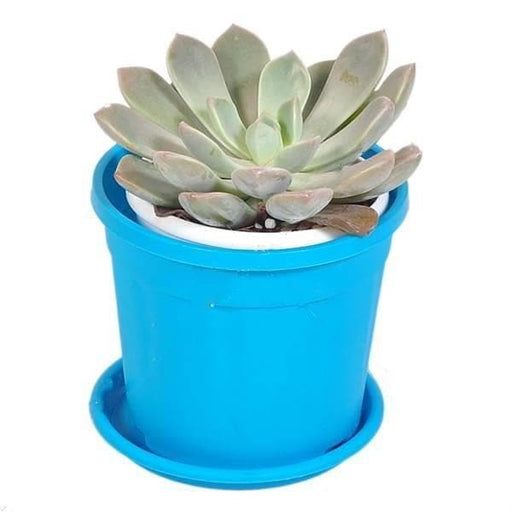 Save 16%
Save %
Save 16%
Save %
DescriptionIt is a type of succulent which is drought tolerant and grows somewhat upright. Sr Item name 1 Echeveria big lotus, Echeveria mazarin...
View full details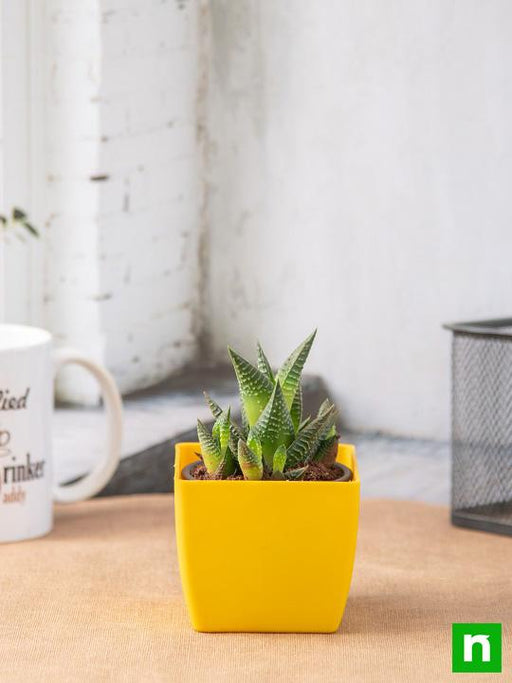
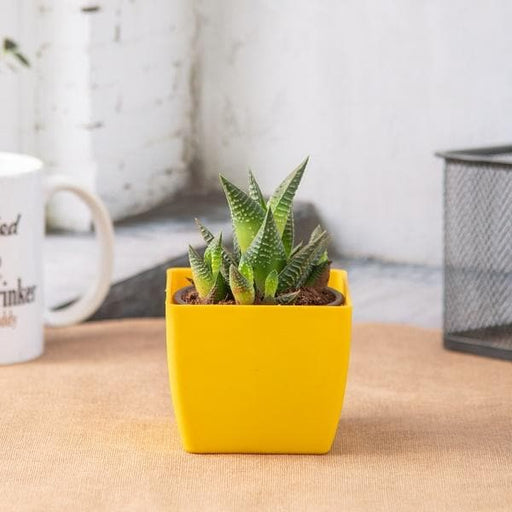 Save 19%
Save %
Save 19%
Save %
DescriptionHaworthia exhibiting attractively marked or textured leaves; you can boost your garden beauty with this. Constituents: Haworthia limifo...
View full details
 Save 12%
Save %
Save 12%
Save %
DescriptionGold Nugget is a true alpine succulent, coming from the highest peaks of distant South Africa. In bloom, Delosperma congestum is irresis...
View full details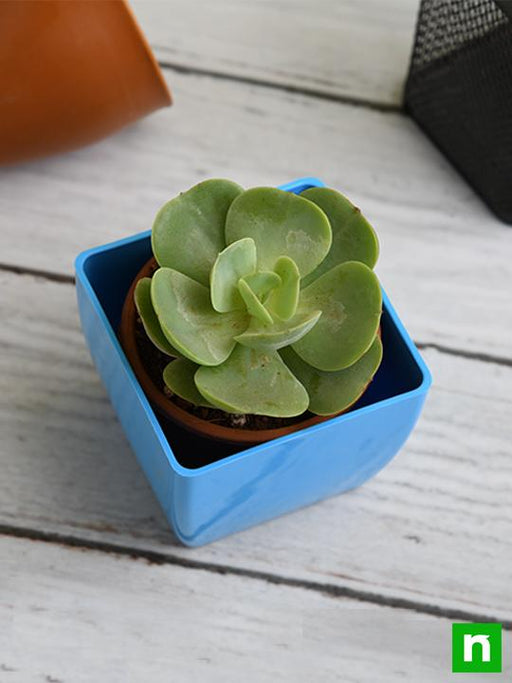
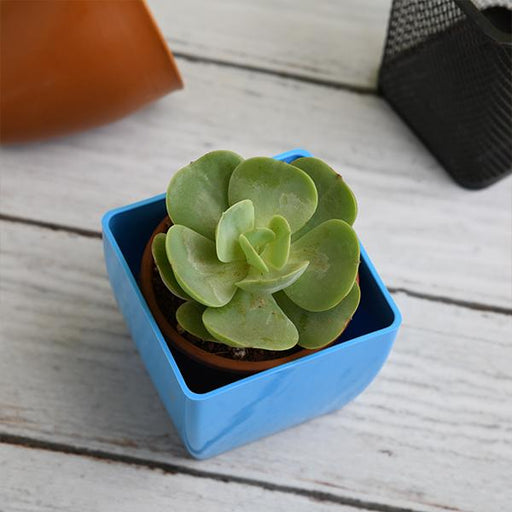 Save 15%
Save %
Save 15%
Save %
DescriptionEcheveria green spoon is a type of succulent which is drought tolerant and grows somewhat spoon-shaped.Constituents: Echeveria green spo...
View full details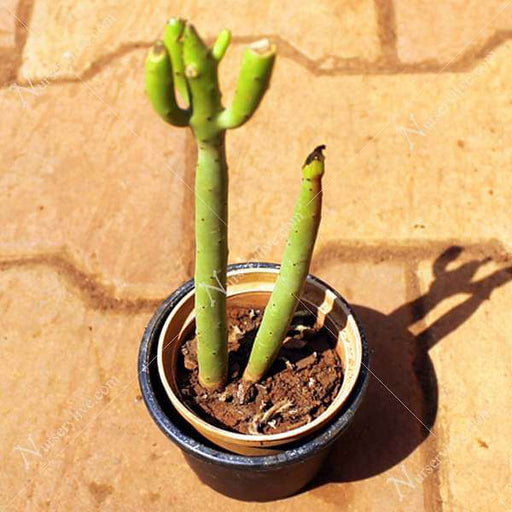 Save 20%
Save %
Save 20%
Save %
DescriptionEuphorbia alluaudii has many herbaceous spurges. Sr Item name 1 Euphorbia alluaudii - Succulent Plant 2 3 inch (8 cm) Grower Round ...
View full details
 Save 20%
Save %
Save 20%
Save %
DescriptionSurprise party Crassula is normally quite a low maintenance plant and is normally very easy to grow.Constituents:Crassula Surprise Party...
View full details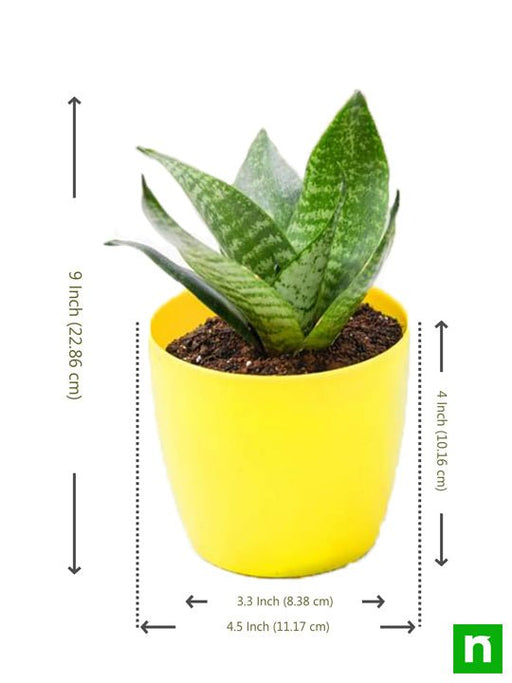
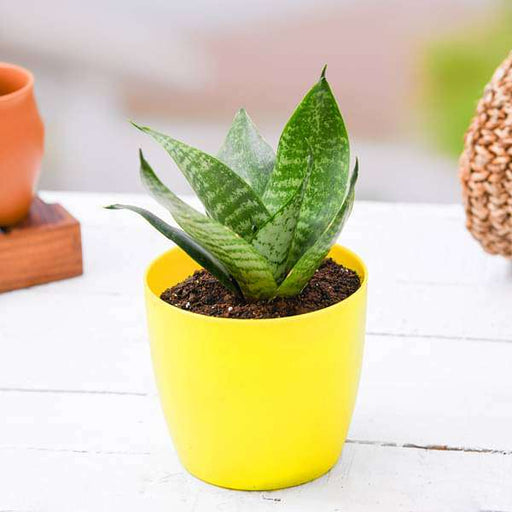 Save 19%
Save %
Save 19%
Save %
DescriptionSansevieria trifasciata Hahnii is a popular houseplant with dark green leaves marked with a pattern of wavy cross stripes in a lighter c...
View full details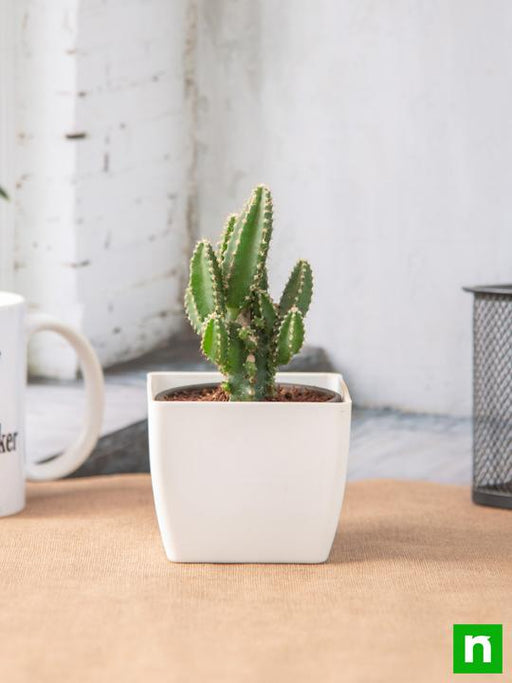
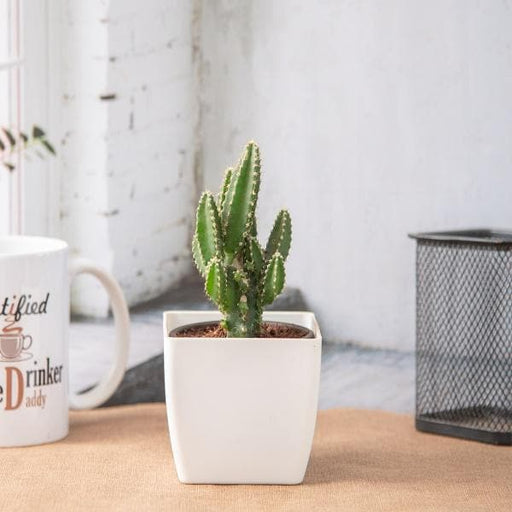 Save 10%
Save %
Save 10%
Save %
DescriptionAcanthocereus tetragonus flowers bloom at night and close during the day.Constituents Acanthocereus tetragonus - Cactus Plant- 1 3 inch ...
View full details
 Save 13%
Save %
Save 13%
Save %
DescriptionIt is an intergeneric cross between Pachyphytum and Echeveria. It is a rosette-forming succulent up to 6 inches (15 cm) tall, with light...
View full details
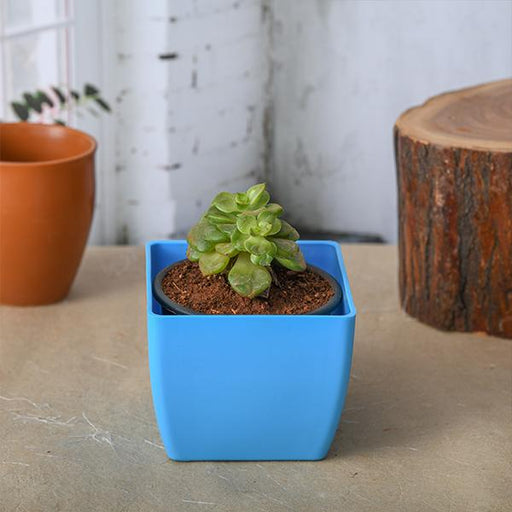 Save 17%
Save %
Save 17%
Save %
DescriptionSedeveria Rolly is an intergeneric hybrid between Sedum and Echeveria. It is a clump-forming succulent with rosettes of shiny, bright gr...
View full details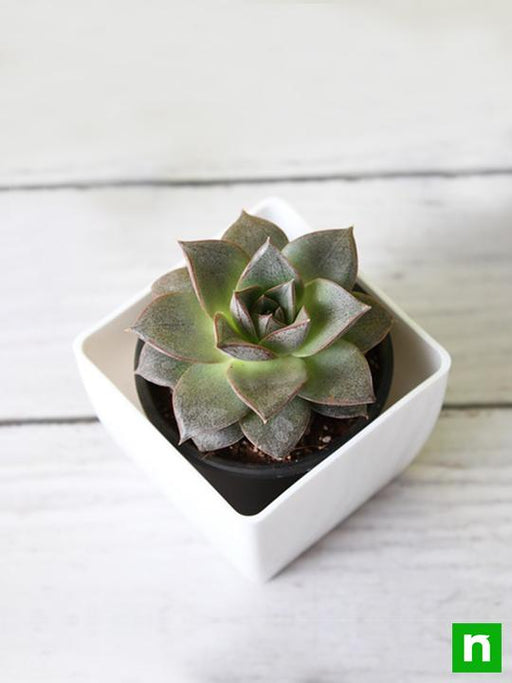
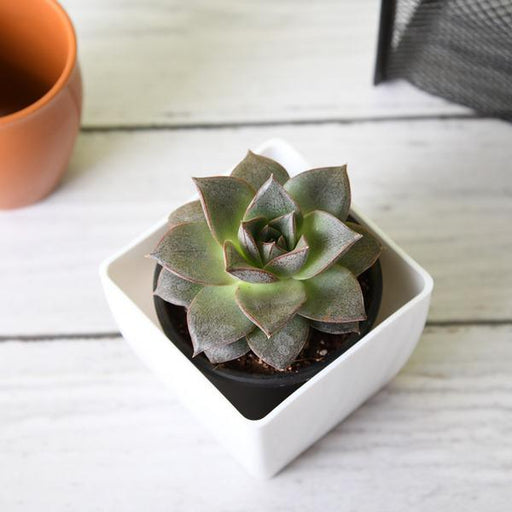 Save 14%
Save %
Save 14%
Save %
DescriptionEcheveria Dionysos is popular low-growing ornamental garden plant. Although they are fairly drought tolerant, they will become more spec...
View full details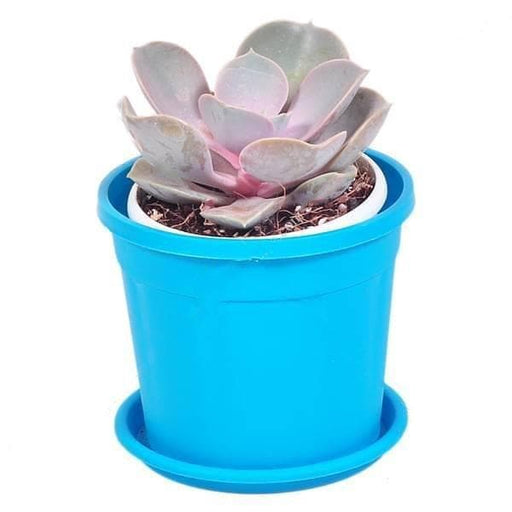 Save 11%
Save %
Save 11%
Save %
DescriptionIt has a lovely pink color and elegant leaf shape. Sr Item name 1 Echeveria Perle Von Nurnberg - Succulent Plant 2 3 inch (8 cm) Gr...
View full details
 Save 15%
Save %
Save 15%
Save %
DescriptionPachyveria clavata is a beautiful succulent plant with red flowers tinged with silver held on spoon-shaped bluish-green leaves. Constitu...
View full details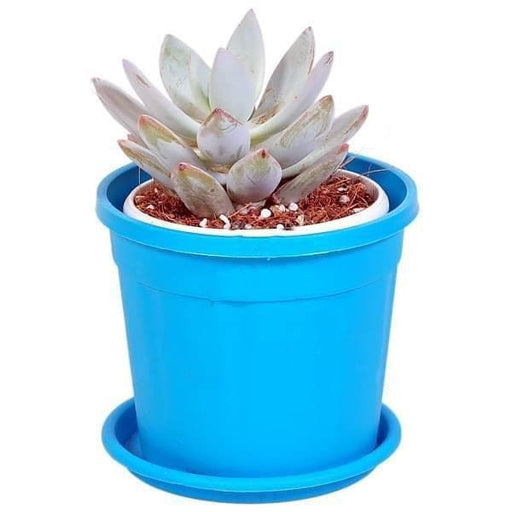 Save 14%
Save %
Save 14%
Save %
DescriptionIt is a type of succulent which is drought tolerant and grows somewhat upright. Sr Item name 1 Echeveria blue, Echeveria blue elf - S...
View full detailsKeeping indoor plants has become a trend nowadays. Apart from making your space look cool, this trend is also good for your health.
Plants ensure a healthy environment inside your home as it removes the toxins, absorbs the respiratory waste (carbon dioxide), and keep the air fresh. These plants also help generate clean and pure oxygen for everyone to breathe.
You can go for low-maintenance plants indoors such as succulents and cactus as they do not require much maintenance and are perfect for those who do not get enough time to take much care of the plants.
The Indoor Beauties - Cactus and Succulents
The indoor plants are known for uplifting the mood and calming the mind, and so they are widely installed in homes nowadays. Having these plants in your home or office will make your day peaceful and productive.
How are Cactus and Succulents Beneficial for Your Home?
Cactus and succulents are indoor plants that are great to have around as they have the benefits of calming down the mind and body. Also, they keep you relaxed and have intensive healing properties. It adds greenery and visual interest to your place without demanding much attention, and that is why these plants are immensely favored.
Use of Cactus and Succulents
These unique indoor plants are extremely good at eliminating toxins from the air and improving air quality. Succulents are good at humidifying the air and thus, considered best inside your home.
You can purchase cactus and succulents from Nurserylive at reasonable prices. Choose from a wide variety and get amazing discounts!
Indoor cactus and succulents are a great choice for those who want to bring some greenery into their home or office. They are easy to care for and can thrive in low-light conditions. With a variety of sizes and shapes, indoor cactus and succulents can add a unique and stylish touch to any space.
Outdoor cactus and succulents are a great choice for those who want to add some low-maintenance plants to their garden. They are drought-tolerant and can thrive in hot and dry climates. With a variety of colors and textures, outdoor cactus and succulents can add a unique and natural touch to any landscape.
Desert cactus are a type of cactus that are native to desert regions. They are known for their spiny and unique shapes, and they can thrive in hot and dry climates. With a variety of sizes and colors, desert cactus can add a dramatic and unique touch to any landscape.
Christmas cactus are a type of succulent that are known for their bright and colorful flowers. They bloom during the holiday season, making them a popular choice for festive decorations. With proper care, Christmas cactus can bloom year after year, adding a festive and cheerful touch to any home.
Echeveria are a type of succulent that are known for their rosette-shaped leaves and vibrant colors. They are a popular choice for indoor gardens and terrariums, and they can be easy to care for with the right conditions. With a variety of colors and sizes, Echeveria can add a unique and lively touch to any space.
Aloe vera is a type of succulent that is known for its healing properties. Its gel can be used to treat burns, cuts, and other skin irritations. Aloe vera is also a popular choice for indoor gardens, as it can thrive in low-light conditions and is easy to care for.
Haworthia are a type of succulent that are known for their unique and striking shapes. They are a popular choice for indoor gardens, as they can thrive in low-light conditions and are easy to care for. With a variety of sizes and shapes, Haworthia can add a dramatic and eye-catching touch to any space.
Saguaro cactus are a type of cactus that are native to the Sonoran Desert. They are known for their tall and distinctive shapes, and they can live for over 150 years. Saguaro cactus are a popular choice for outdoor landscaping, adding a dramatic and iconic touch to any landscape.
Jade plant is a type of succulent that is known for its thick and fleshy leaves. It is a popular choice for indoor gardens, as it can thrive in low-light conditions and is easy to care for. With proper care, jade plant can grow into a tree-like shape, adding a unique and elegant touch to any space.
Prickly pear cactus is a type of cactus that is known for its flat and round shape, as well as its edible fruit. It is a popular choice for outdoor landscaping, as it can thrive in hot and dry climates. With a variety of colors and textures, prickly pear cactus can add a unique and natural touch to any landscape.
String of pearls is a type of succulent that is known for its trailing stems and round, bead-like leaves. It is a popular choice for indoor hanging baskets, as it can create a unique and whimsical look. With proper care, string of pearls can grow up to several feet long, adding a playful and interesting touch to any space.
Barrel cactus is a type of cactus that is known for its barrel-like shape and spines. It is a popular choice for outdoor landscaping, as it can thrive in hot and dry climates. With a variety of sizes and colors, barrel cactus can add a unique and dramatic touch to any landscape.
Snake plant is a type of succulent that is known for its long and upright leaves. It is a popular choice for indoor gardens, as it can thrive in low-light conditions and is easy to care for. With a variety of sizes and shapes, snake plant can add a sleek and modern touch to any space.
Crown of thorns is a type of succulent that is known for its spiky leaves and bright, colorful flowers. It is a popular choice for indoor gardens and can thrive in low-light conditions. With proper care, crown of thorns can bloom year-round, adding a vibrant and cheerful touch to any space.
Zebra plant is a type of succulent that is known for its distinctive zebra-like stripes. It is a popular choice for indoor gardens and can thrive in low-light conditions. With a variety of sizes and colors, zebra plant can add a unique and bold touch to any space.
Agave is a type of succulent that is known for its large and dramatic rosette shape. It is a popular choice for outdoor landscaping, as it can thrive in hot and dry climates. With a variety of sizes and colors, agave can add a striking and architectural touch to any landscape.
Living stones are a type of succulent that are known for their unique and unusual appearance. They are a popular choice for indoor gardens, as they can create a fascinating and eye-catching display. With proper care, living stones can bloom with small, daisy-like flowers, adding a whimsical and charming touch to any space.
Cactus soil is a specially formulated soil blend that is designed for cactus and succulent plants. It typically contains sand, perlite, and other materials that provide excellent drainage and aeration. Using the right type of soil is crucial for the health and growth of cactus and succulent plants.
Cactus fertilizer is a specially formulated fertilizer that is designed for cactus and succulent plants. It typically contains lower amounts of nitrogen and higher amounts of phosphorus and potassium, which are essential for the health and growth of these plants. Using the right type of fertilizer can help your cactus and succulent plants thrive.
Terrariums are small, enclosed gardens that can be used to grow cactus and succulent plants. They are a popular choice for indoor gardens, as they can create a unique and self-contained ecosystem. With a variety of sizes and styles available, terrariums can add a playful and interesting touch to any space.
Cactus and succulents are plants that are known for their ability to store water in their leaves, stems, and roots.
Cactus and succulents are low-maintenance plants that require minimal watering and care. They are also great for air purification and can add a unique and interesting touch to your home decor.
The ideal soil mix for cactus and succulents should be well-draining and not retain too much water. A mix of potting soil, sand, and perlite is ideal.
Yes, cactus and succulents can be grown indoors. They are perfect for bright and sunny windowsills.
Cactus and succulents need plenty of bright, indirect sunlight. They can also tolerate some direct sunlight.
Cactus and succulents do not require frequent watering. Water them when the soil is completely dry, typically once a week or every two weeks.
Yes, cactus and succulents can be propagated through stem or leaf cuttings.
Cactus and succulents do not require frequent fertilization. Use a balanced fertilizer once a month during the growing season.
Common pests that affect cactus and succulents include mealybugs, spider mites, and scale insects. Overwatering can also cause root rot.
Yes, cactus and succulents can be grown in terrariums. However, make sure to choose a terrarium with proper ventilation and use a well-draining soil mix.
Cactus and succulents thrive in warm temperatures between 20 to 30 degrees Celsius.
Yes, cactus and succulents can be grown in hanging baskets. Choose a hanging basket with good drainage and use a well-draining soil mix.
The best time to repot cactus and succulents is in the spring, before the growing season begins.
Yes, cactus and succulents can be grown outdoors in areas with warm and dry climates.
Some cactus and succulents can be grown in water. However, they prefer well-draining soil and should not be left in standing water.
Popular varieties of cactus and succulents include Echeveria, Aloe vera, Haworthia, and Jade plant.
Yes, cactus and succulents can be grown in small pots. However, make sure the pot has good drainage and use a well-draining soil mix.
The lifespan of cactus and succulents can vary depending on the variety and growing conditions. They can live for many years with proper care.
To prevent overwatering cactus and succulents, make sure to use a well-draining soil mix and only water when the soil is completely dry.
Cactus are a type of succulent that have spines or thorns, while succulents do not have spines or thorns.
Cactus and succulents prefer bright, indirect sunlight. However, some varieties can tolerate low light conditions.
Protect cactus and succulents from pests and diseases by keeping them in a clean environment, avoiding overwatering, and using insecticidal soap or neem oil for pest control.
To transplant cactus and succulents, gently remove them from their pot and place them in a new pot with fresh soil mix.
Yes, cactus and succulents are perfect for rock gardens. They are low-maintenance and can tolerate dry conditions.
Common mistakes when growing cactus and succulents include overwatering, using a soil mix that retains too much water, and placing them in areas with insufficient sunlight.
Prune cactus and succulents by cutting off any dead or damaged leaves or stems. Use clean and sharp pruning shears.
To propagate cactus and succulents through stem cuttings, cut a healthy stem and let it dry for a few days. Plant the stem in a well-draining soil mix and water sparingly.
Yes, cactus and succulents can be grown in hanging planters. Choose a planter with good drainage and use a well-draining soil mix.
Choose a pot size that is slightly larger than the root ball of your cactus or succulent. Make sure the pot has good drainage.
Yes, cactus and succulents can be grown in groups. This can create a beautiful and unique display of different varieties.
